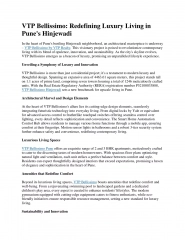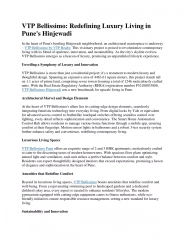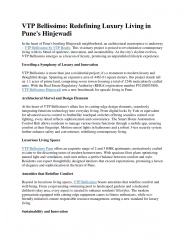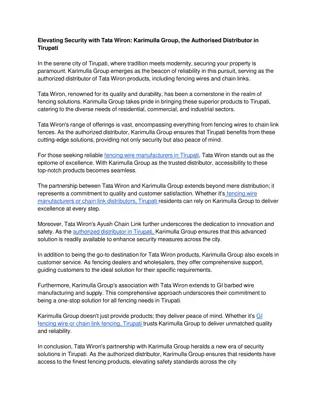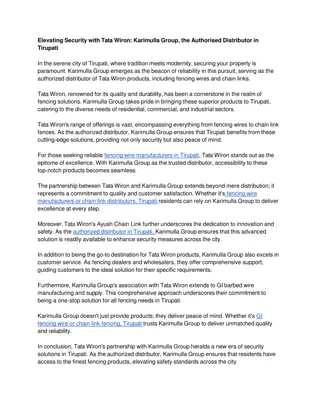
Exploring Qualcomm's TrustZone for Android Kernel Exploit
Delve into the intricacies of Qualcomm's TrustZone, uncover how its communication protocol operates, and learn how a kernel exploit (CVE-2021-1961) was harnessed for a significant compromise. Gain insights and key takeaways from this thorough examination of Android security.
Download Presentation

Please find below an Image/Link to download the presentation.
The content on the website is provided AS IS for your information and personal use only. It may not be sold, licensed, or shared on other websites without obtaining consent from the author. If you encounter any issues during the download, it is possible that the publisher has removed the file from their server.
You are allowed to download the files provided on this website for personal or commercial use, subject to the condition that they are used lawfully. All files are the property of their respective owners.
The content on the website is provided AS IS for your information and personal use only. It may not be sold, licensed, or shared on other websites without obtaining consent from the author.
E N D
Presentation Transcript
Elevating the TrustZone to Achieve a Powerful Android Kernel Exploit Tamir Zahavi-Brunner
About me Tamir Zahavi-Brunner (Twitter: @tamir_zb) Previously: 1. Security research at IDF 2. Android vulnerability research at Zimperium 3. Software engineer at NextSilicon 2
What will I talk about 1. A brief overview over Qualcomm s TrustZone 2. Going deeper into how Qualcomm s TrustZone communication protocol works 3. The vulnerability I found (CVE-2021-1961) in the implementation of this communication protocol 4. How I exploited this vulnerability to achieve an extremely reliable kernel compromise (unfortunately I won t have enough time to go into complete details) 5. Takeaways from this research 3
The Android TrustZone - A big and important aspect in Android s security. A whole separate OS running on every Android device, alongside Android. - Usually used in cryptography operations, like keys for encrypting/decrypting data (e.g. DRM). Makes sure the keys won t be exposed even in case of a full kernel compromise. - More privileged than the kernel (perhaps the most privileged component in Android) - Unlike Android which is mostly open source, the TrustZone is completely closed source* *Some chipsets have open source TrustZone, but they are new/rare 5
The Qualcomm TrustZone - Each chipset (Qualcomm, Samsung/Exynos, Huawei/HiSilicon, etc) has its own TrustZone implementation - QSEE/QTEE: Qualcomm Secure/Trusted Execution Environment 6
Motivation: Is Qualcomms TrustZone under-researched? Most thorough research - Gal Beniamini s set of blog posts. Last one was in 2016. Since then: - TrustZone apps fuzzing from RECON Montreal 2019 - Used an old QSEE from Nexus 6. Investigating and Breaking Widevine on QTEE from BlackHat Asia 2021 - - Maybe more that I missed? 7
The Android TrustZone Normal World Secure World App App App Trustlet Trustlet Trustlet EL0 Kernel Secure Kernel EL1 Hypervisor Secure Hypervisor EL2 Secure Monitor EL3 8
The Qualcomm TrustZone: Relevant parts Normal World Secure World Android user mode EL0 Trustlet (user mode) /dev/qseecom QSEECom EL1 (kernel) QSEE kernel Linux kernel QSEECom: The Linux kernel part in charge of communication with QSEE 9
Preface - - This is not a full root vulnerability In order to exploit it you need access to /dev/qseecom, which is only accessible by some privileged Android services It only works on Qualcomm devices - BUT: - My main idea is not to just achieve one more root exploit , but rather discuss new and interesting exploitation techniques It is still a very powerful kernel exploit that works on all Qualcomm devices/versions - 11
QSEE Memory Access Model - Unlike the Linux kernel which operates in virtual addresses, QSEE operates in physical addresses* - Linux kernel can t access QSEE s region of physical addresses - The QSEE kernel has full access to the Linux kernel memory - Trustlets memory accesses are limited by the QSEE kernel, so normally can t access the Linux kernel *Actually they are virtual addresses which mirror the physical addresses 12
QSEE Memory Access Model Physical address space: Normal Memory Linux kernel QSEE kernel User mode process Secure Memory Trustlet 13
Normal World <-> Secure World The vulnerability is in QSEECom, so I ll start with the background: How communication works between the other components Trustlet Linux kernel QSEE kernel 14
Normal World <-> Secure World: Simple version - IPC/RPC: Send input, receive output - The Linux kernel calls the Secure World through something called SMC (Secure Monitor Call, kind of like a system call) - In this SMC, it provides two physical address pointers to buffers in the Normal World memory, one for input and one for output (alongside sizes of course) - The QSEE kernel gives the trustlet access to these buffers 15
Normal World <-> Secure World: Simple version Linux kernel QSEE kernel Normal Memory Input 16
Normal World <-> Secure World: Simple version Trustlet Linux kernel QSEE kernel Normal Memory Input 17
Normal World <-> Secure World: Simple version Trustlet Linux kernel Normal Memory Input Output 18
Normal World <-> Secure World: Simple version Trustlet Linux kernel Normal Memory Input Output 19
Normal World <-> Secure World: More complex - The input buffer can have pointers to other buffers in Normal World memory - The Linux kernel can provide up to 4 whitelist entries, used to tell the QSEE kernel which other areas of Normal World memory it can whitelist for the trustlet 20
Normal World <-> Secure World: Whitelist entries Linux kernel QSEE kernel Normal Memory Input Input/Output 21
Normal World <-> Secure World: Whitelist entries Whitelist entry Linux kernel QSEE kernel Normal Memory Input 0xdeadbeef Input/Output 22
Normal World <-> Secure World: Whitelist entries Input buffer 0xdeadbeef 11 22 33 44 ef be ad de 00 00 00 00 fe fe fe fe 00 00 00 00 01 00 00 00 55 66 77 88 99 aa bb cc Whitelist entry offset = 4 size = 0x10000 23
Normal World <-> Secure World: Whitelist entries Trustlet Linux kernel QSEE kernel Normal Memory Input Input/Output 24
Normal World <-> Secure World: QSEECom side Now, let s go into details about the QSEECom side Android user mode /dev/qseecom QSEECom Linux kernel 25
Normal World <-> Secure World: QSEECom side - QSEECom uses the ION kernel mechanism - ION tl;dr: File descriptors that point to buffers. An ION buffer can be mapped both in user space and in kernel space. - All data from/to QSEE is on ION buffers 26
Normal World <-> Secure World: QSEECom side Android user mode Normal Memory ION buffer Input 27
Normal World <-> Secure World: QSEECom side Android user mode ioctl QSEECom Linux kernel Normal Memory ION buffer Input 28
Normal World <-> Secure World: QSEECom with pointers - QSEECom also supports the pointers mechanism - QSEECom allows you to add up to 4 ION fds to each ioctl, which it turns into whitelist entries - It is also in charge of writing the physical addresses into the input buffer (user mode doesn t know the physical addresses) 29
Normal World <-> Secure World: QSEECom with pointers Input buffer before ioctl 11 22 33 44 00 00 00 00 00 00 00 00 fe fe fe fe 00 00 00 00 01 00 00 00 55 66 77 88 99 aa bb cc ION fd offset = 4 30
Normal World <-> Secure World: QSEECom with pointers Input buffer after ioctl 11 22 33 44 ef be ad de 00 00 00 00 fe fe fe fe 00 00 00 00 01 00 00 00 55 66 77 88 99 aa bb cc Whitelist entry offset = 4 size = 0x10000 31
The vulnerability - Each physical address written by QSEECom is 8 bytes - What if you provide two ION fds, whose offsets cause the physical addresses to overlap? 33
The vulnerability Input buffer before ioctl 11 22 33 44 00 00 00 00 00 00 00 00 fe fe fe fe 00 00 00 00 01 00 00 00 55 66 77 88 99 aa bb cc ION fd offset = 4 Same ION fd offset = 8 34
The vulnerability Input buffer during ioctl 11 22 33 44 ef be ad de 00 00 00 00 fe fe fe fe 00 00 00 00 01 00 00 00 55 66 77 88 99 aa bb cc Same ION fd offset = 8 35
The vulnerability Input buffer after ioctl 0xdeadbeefdeadbeef 11 22 33 44 ef be ad de ef be ad de 00 00 00 00 00 00 00 00 01 00 00 00 55 66 77 88 99 aa bb cc Whitelist entry offset = 4 size = 0x10000 Whitelist entry offset = 8 size = 0x10000 36
The vulnerability - We can whitelist kernel memory which is not an ION buffer! - What if 0xdeadbeefdeadbeef has important kernel data? We could make a trustlet modify it! 37
The vulnerability Input buffer after ioctl 0xdeadbeefdeadffff 11 22 33 44 ff ff ad de ef be ad de fe fe fe fe 00 00 00 00 01 00 00 00 55 66 77 88 99 aa bb cc 00 00 00 00 ef be ad de ef be ad de 00 00 00 00 Whitelist entry offset = 0x24 size = 0x10000 Whitelist entry offset = 0x28 size = 0x10000 38
Building an exploit - This is nice, but realistically, it would be hard to shape meaningful physical addresses by overlapping ION buffers physical addresses - Reminder: There is a limit of 4 ION buffers/whitelist entries per request - Still, I wanted to achieve a full kernel read+write primitive 40
Whitelist feature: One more detail - Up until now I only used ION buffers which were contiguous in physical memory, but the whitelist feature also supports whitelisting buffers which are not contiguous - A single whitelist entry can point to an array of physical memory buffers, instead of just one 41
Whitelist feature: One more detail Physical memory Virtual memory 0x88888888 ION buffer 0xdeadbeef 42
Whitelist feature: One more detail Input buffer before ioctl 11 22 33 44 00 00 00 00 00 00 00 00 fe fe fe fe 00 00 00 00 01 00 00 00 55 66 77 88 99 aa bb cc 00 00 00 00 00 00 00 00 00 00 00 00 00 00 00 00 00 00 00 00 00 00 00 00 00 00 00 00 00 00 00 00 Non-contiguous ION fd offset = 0x24 43
Whitelist feature: One more detail Input buffer after ioctl 11 22 33 44 00 00 00 00 00 00 00 00 fe fe fe fe 00 00 00 00 01 00 00 00 55 66 77 88 99 aa bb cc 00 00 00 00 88 88 88 88 00 00 00 00 00 00 01 00 ef be ad de 00 00 00 00 00 00 01 00 00 00 00 00 44
Whitelist feature: One more detail Input buffer after ioctl 11 22 33 44 00 00 00 00 00 00 00 00 fe fe fe fe 00 00 00 00 01 00 00 00 55 66 77 88 99 aa bb cc 00 00 00 00 88 88 88 88 00 00 00 00 00 00 01 00 ef be ad de 00 00 00 00 00 00 01 00 00 00 00 00 address = 0x88888888 size = 0x10000 45
Whitelist feature: One more detail Input buffer after ioctl 11 22 33 44 00 00 00 00 00 00 00 00 fe fe fe fe 00 00 00 00 01 00 00 00 55 66 77 88 99 aa bb cc 00 00 00 00 88 88 88 88 00 00 00 00 00 00 01 00 ef be ad de 00 00 00 00 00 00 01 00 00 00 00 00 address = 0xdeadbeef size = 0x10000 46
Whitelist feature: One more detail Input buffer after ioctl 11 22 33 44 00 00 00 00 00 00 00 00 fe fe fe fe 00 00 00 00 01 00 00 00 55 66 77 88 99 aa bb cc 00 00 00 00 88 88 88 88 00 00 00 00 00 00 01 00 ef be ad de 00 00 00 00 00 00 01 00 00 00 00 00 Non-contiguous Whitelist entry offset = 0x24 count = 2 47
Whitelist feature: One more detail - This is interesting, as here the sizes of the whitelisted buffers are passed inside the input buffer, and not as outside metadata in the whitelisted entries - This means that by using non-contiguous ION buffers and overlapping them with other ION buffers, not only the address of the whitelisted buffer can be modified, but also the size 48
Linux kernel physical addresses - I want to whitelist the entire Linux kernel physical memory, so I need to know what its addresses are - This can be queried through /proc/iomem - These addresses are always the same, even after a reboot 49
Whitelisting the entire kernel memory (Very briefly) - Through overlapping whitelist entries, I achieve an item in a whitelist array whose address is 0 and whose size is bigger than the addresses of the kernel memory 50





